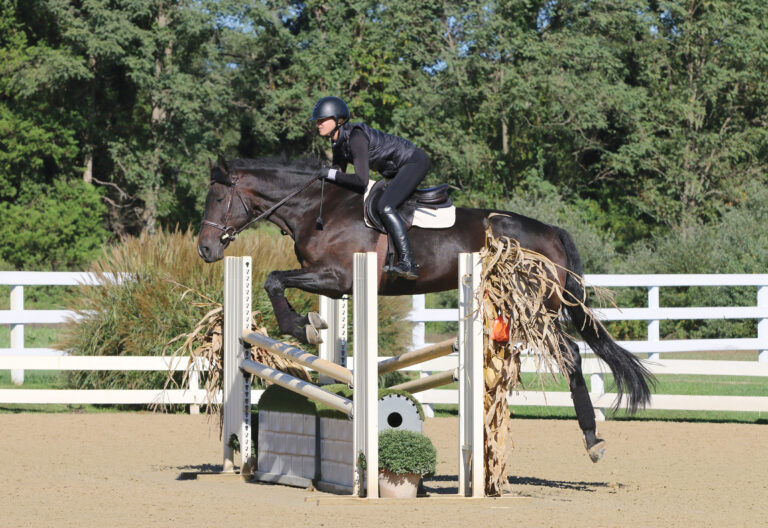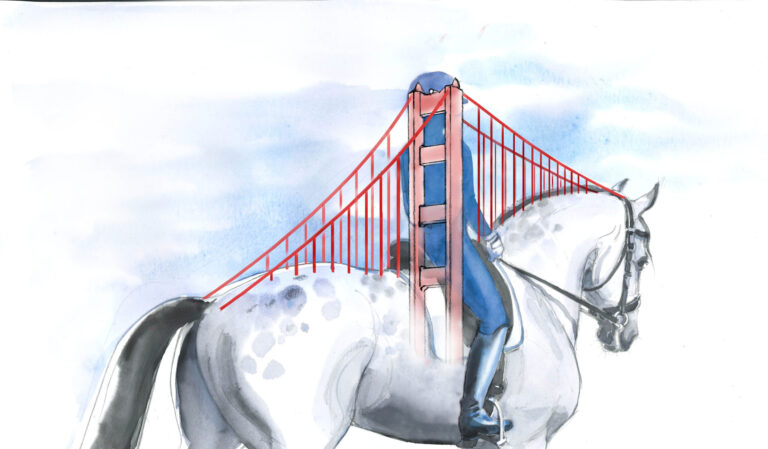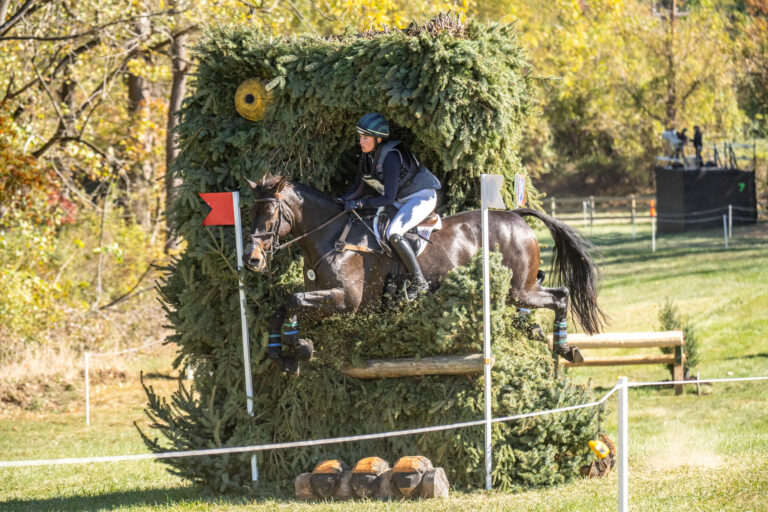Andreas Dibowski is a man of few words. He has a good command of the English language, but he gives simple advice to riders—“forward” is his most common instruction. Throughout exercises and course practice, he expects students to ride forward and straight. He also wants to see a supportive contact from both the rein and leg and effective use of the upper body, which helps the control, balance and quality of the jump.
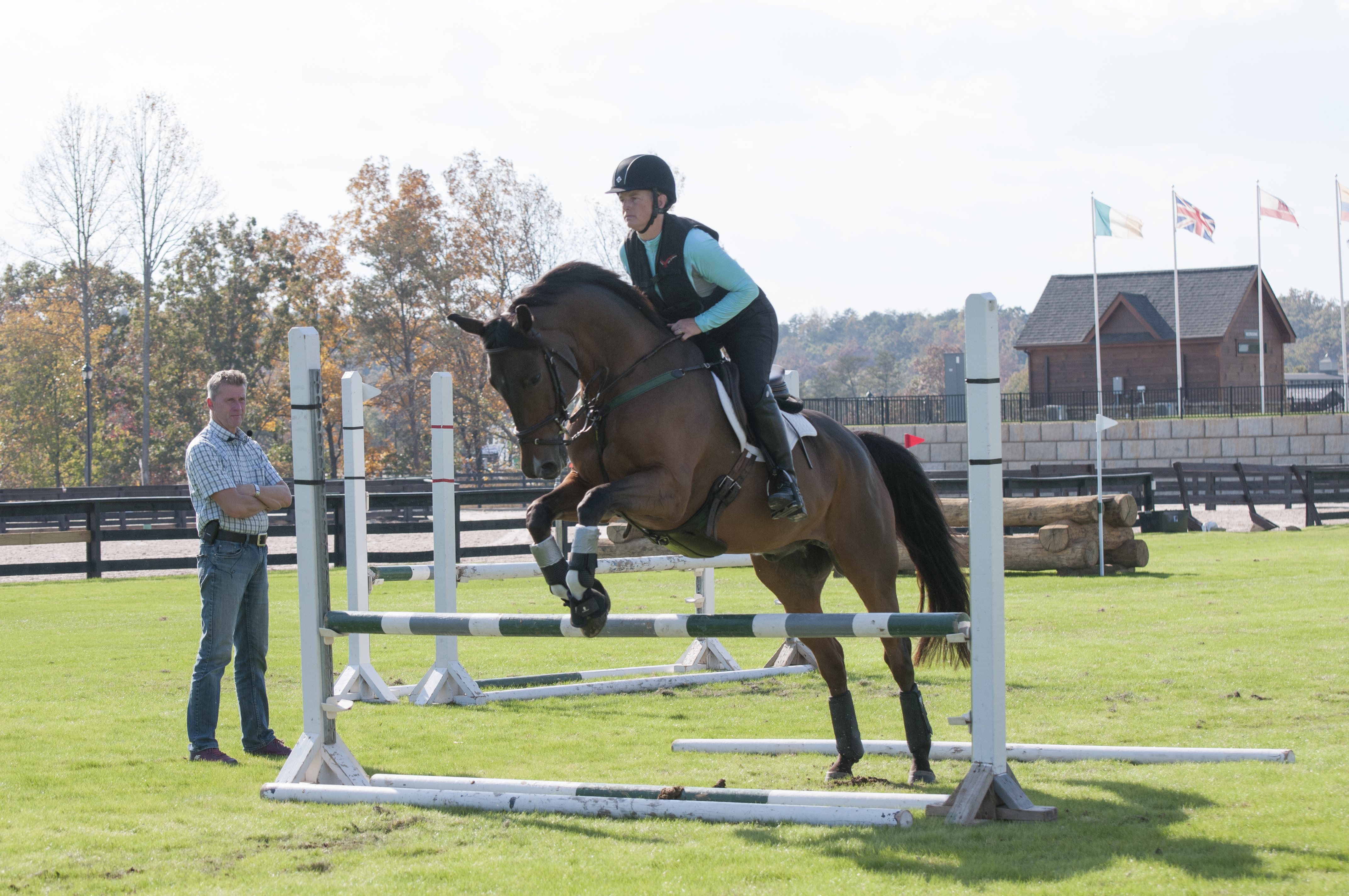
One group of 20 event riders got a glimpse of the German training philosophy during the rare opportunity to clinic with the Olympic gold medalist. Andreas recently visited the Tryon International Equestrian Center during the American Trakehner Association Convention to teach show-jumping and cross-country lessons to horses and riders from Beginner Novice to the Advanced level.
The lessons included coursework utilizing combinations, related distances and turning exercises. During the warm-up he wanted riders to practice transitions and turns and adjust the length of step at the canter, alternating between sending the horse forward and collecting. This got the horses’ bodies working and their minds attentive.
.jpg)
Responsibilities of Horse and Rider
As Andreas sees it, both horse and rider share responsibility when riding cross country. The rider’s responsibility, he says, is to show the horse the right direction, give him the correct speed, keep her own balance and know the condition of the horse and her own fitness. The horse’s responsibility is to find the moment of take-off.
Finding the distance is practically an obsession for riders who compete in jumping disciplines, but Andreas insists that on cross country it is “absolutely dangerous” for the rider to count down strides and tell the horse when to jump. If the rider gets it wrong or the horse is distracted and takes an extra step, they can wind up too close to the fence. Usually this occurs when the rider is in front of the motion, lacks contact and balance and tries to determine the moment of take off for herself. Andreas calls this “riding into the hole.”
“The horses should be jumping or galloping all the time in front of the leg, then it doesn’t matter if you come 1 meter closer to the jump or more far away,” Andreas said. “What I see in this clinic is that a lot of riders try to do everything perfect, but then they forget the quality of the canter so they are always looking to the perfect distance, ride slower and lose all the power in the horse’s body. It doesn’t matter if we have a vertical, oxer or skinny fences—we need the horses in front of our forward riding aids all of the time. That is the principle of everything we need to jump safely over every kind of cross-country fence.”“When we school horses we have to show them what they can do and never what they cannot do,” says Andreas. Tik Maynard’s Thoroughbred Remarkable-54 had done one Preliminary event before the clinic. At the Preliminary level narrow fences like this wedge become more common. Using guide rails when schooling will help show the horse the way and encourage straightness in his body.
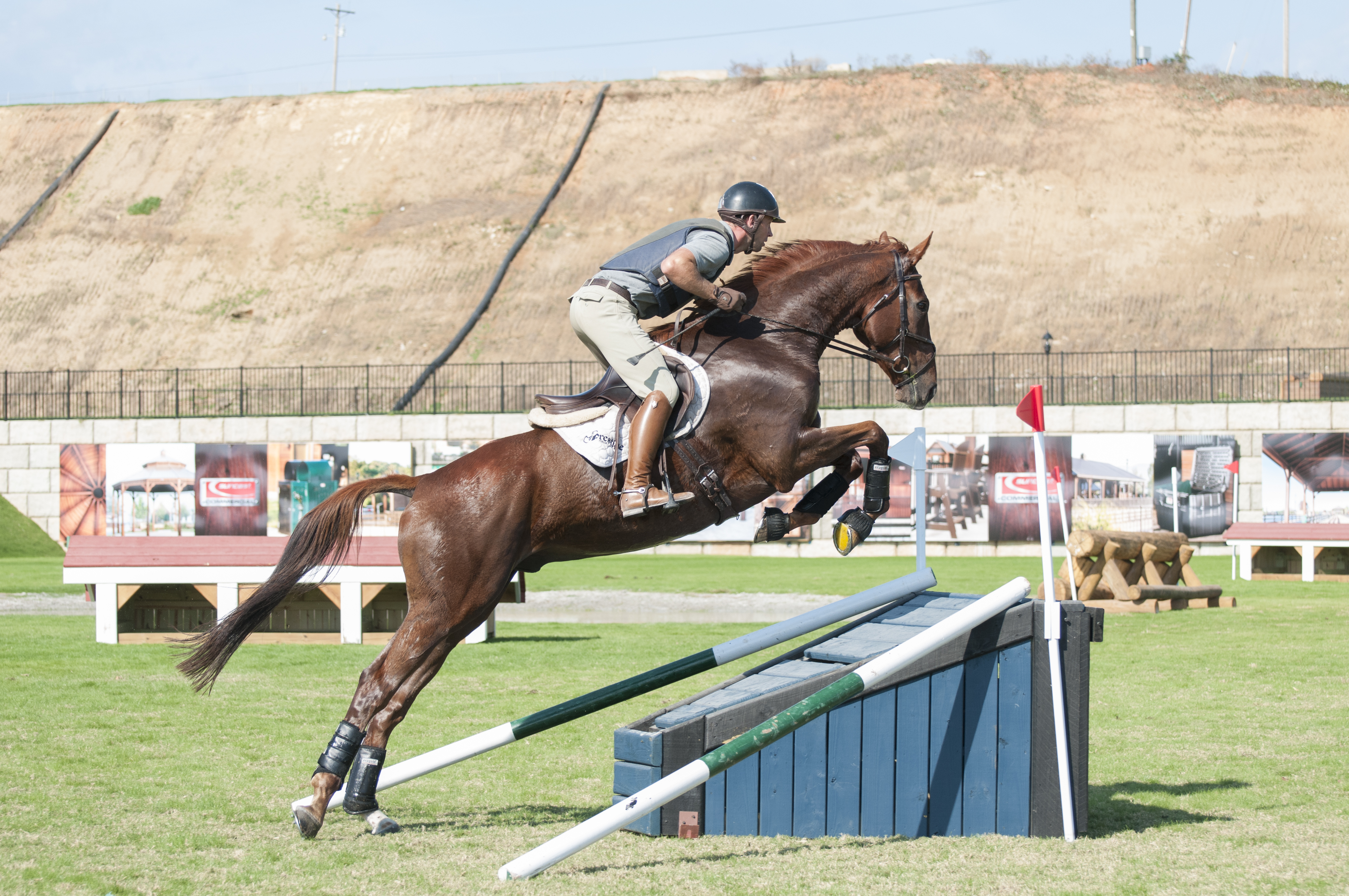
While the rider should be aware of the distance to the fence, she should focus on creating a powerful canter and maintaining it all the way to the base of the jump. If a rider sees the distance is going to be short, don’t throw the reins at the horse and slow down. Instead, hold the contact, close the leg and create more activity in the canter.
“If we have a good speed and good quality of gallop then we have to bring up the body, bring the horse to an uphill position and kick them a little bit at the same time and get more activity,” Andreas said. “I think the best distance is always short to the fence. That does not mean we give them rein and let them run under the fence, but when we have a short distance and can hold and keep the uphill position, that is the best chance to make a powerful and safe jump.
“Never look for the long distance. It happens sometimes when the horse is too motivated or the rider is looking for the long distance, but that is always the more dangerous situation,” Andreas advised.
If a horse does get the long distance, it is important to concentrate on bringing him back together and getting a better distance on the next fence. Taking a long one repeatedly will cause a horse to lose trust in the rider and begin to add strides, Andreas said.
Developing Trust and Quietness
From the time a young horse is starting his schooling to when a rider begins asking difficult questions, trust is critical. A horse who trusts will try hard for his rider and both individuals can focus on their responsibilities.
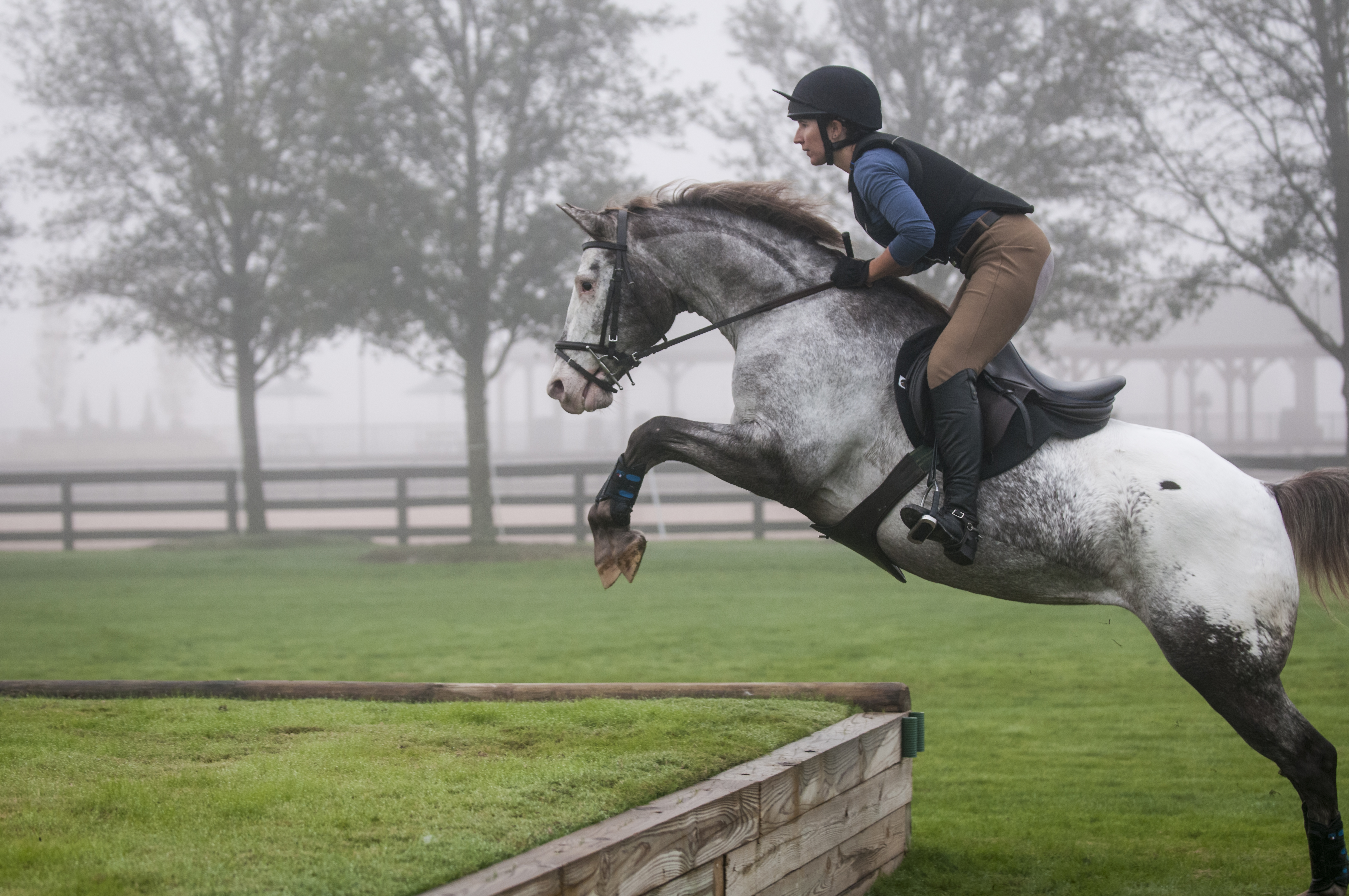
“All the time, every day, we build up a big trust and it is very important we do not destroy it,” Andreas said. “When we school horses we have to show them what they can do and never what they cannot do.”
For example, when starting a horse over angled fences, show him with guide rails instead of leaving it open so he learns he can run out to the side. When teaching him to go into water, take an experienced horse to show him. Giving a young or learning horse time to figure out a problem and showing him a way helps to develop quietness, which is an important principle to Andreas.
“Everything we do with the horses has to come from quietness. Especially when we start with young horses, we have to take the time to show the horses what they have to do,” he said.
However, if the horse is physically and mentally prepared for a new task and you have shown him the way, you must be determined that he will complete the task or you risk creating a lifelong problem. Andreas referred to this principle as “consequence and determination.”
This concept came into play during my own lessons with Andreas. I rode a pony mare who is a clever, talented jumper, but she can be a little too smart and is not averse to throwing on the brakes in front of a fence. Andreas told me that I had to have more faith that she can do the job but ride with more determination and encouragement to get a good jump.
Balance and Contact
There must be a good balance between horse and rider that can be achieved through an effective position and contact. Often, the riders would try to help the horse by being too active with the upper body: “When you want to ‘help,’ don’t make pressure come from body, use the leg.”
.jpg)
However, the upper body has a purpose when it comes to achieving good balance and communication with the horse. For instance, leaning forward with the body says to go forward, while bringing the body back says to come back onto the hind legs and collect. Throwing the upper body forward too soon at the take-off for a fence—or jumping ahead—can cause you to ride “into the hole.” Becoming proficient with your upper body as an aid will help with control, balance and the quality of jump.
“When we want to bring them back, we have to come back with our upper body. That is the biggest mistake the riders are having. The problem is when we stay in front with the upper body, the horse doesn’t listen and then we try to bring them back too much with the rein. This is not necessary when we can use our body to bring the horses more to the hind leg.”
.jpg)
By pulling the shoulders and upper body back while maintaining contact, a rider can half-halt and apply the leg so the horse carries himself better, thus creating the active and powerful canter we desire to jump safely. “They don’t do that when we start to fight with the bit or pull on the rein.”
Andreas appreciates a longer rein over a short rein not only because it encourages a better position for the rider but because it also allows the horse to use his neck for balance. “I often tell the riders they have to keep the rein longer and not too short because when they shorten the rein too much they pull their own body too far in front and the horses come too short in the neck. The neck is a very important part of the body for the horse to find their own balance,” Andreas said.
“It is always better to keep the horse long enough in the neck. Some horses have the problem, especially hot horses or when they are too motivated, that they are short in the neck. These horses are very difficult to keep on a good line on cross country.”
Even with a longer rein, Andreas wants contact on the approach to a jump. This is when the hand, seat and leg work together to bring the horse into an uphill balance. Andreas also wants the horse looking for the contact and not the rider bringing the contact to him. A longer neck also helps the horse to move straighter in his body making it easier for the rider to control, circling back to the rider’s responsibility of providing direction in addition to speed.
Andreas frequently reminded athletes to ride straight after a combination or the final fence on course. Additionally, the riders were not allowed to make a hasty down transition to stop at the end of a round, and instead had make good transitions down and keep the horse working until the rider decided it was time to stop.
“The moment after the fence is also the moment before the next fence. If you stop your riding and the horse is doing whatever he wants to do in this moment, then it takes the rider a longer time to make the preparation for the next fence,” he said. “We want to ride from point A to point B in one straight line with a jump in between. I try to school the riders and horses from the beginning that the horse has to follow the rider, but if the rider is not showing the horse the way, why should they have to follow him?”
Andreas concluded that in the end, safety is the most important thing. Safe riding is possible when the horse and rider take responsibility, stay in balance together and trust each other.
Currently ranked 13th in the world on the FEI World Eventing Athlete Rankings, Andreas Dibowski is a stalwart on the German Eventing Team. He has competed in three World Equestrian Games and three Olympic Games; he was a member of the gold-medal-winning team at the 2008 Olympics in Hong Kong, riding FRH Butts Leon. In 2016 he won the Luhmühlen CCI**** riding It’s Me XX.
This article was originally published in the March 2017issue of Practical Horseman.





